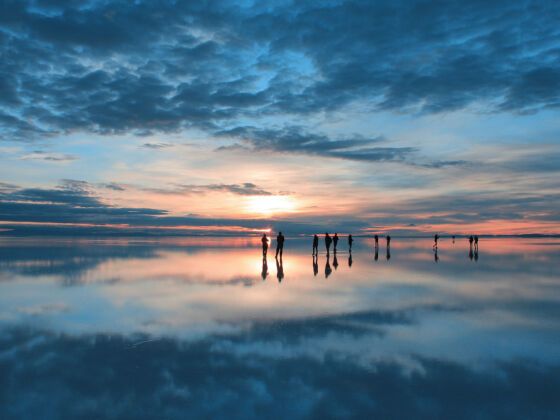YOU’RE IN THE MIDDLE OF BOLIVIAN NOWHERE. In front of you is a shallow bowled depression, its center carpeted in a bright green lake filled with flamingos. Over your shoulder rise twin volcanic peaks, capped with ice. Just beyond the next ridge stretches a snow-white salt flat, rippling with heat from the midday sun…
Few travelers to Bolivia miss the “Southwest Circuit.” The Salar de Uyuni, the world’s largest salt flat, is its star attraction. Standing in the center of its 4,000-square-mile expanse, horizons vanish, leaving nothing but blinding white below and rich, unblemished blue above.
